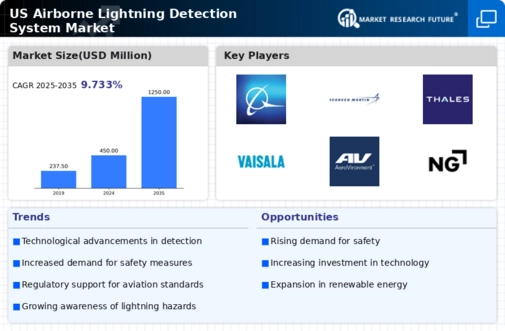The US Airborne Lightning Detection System Market is characterized by its innovative technologies and sophisticated solutions designed to mitigate the risks associated with lightning incidents during flight operations. This market has seen considerable growth over the years due to increasing awareness of safety measures, advancements in radar and detection technologies, and the rising necessity for airspace management and meteorological forecasting. Competition in this space is primarily driven by the need for enhanced detection systems that provide real-time alerts to operators, ensuring both passenger safety and protection of aircraft from potential lightning strikes.
Understanding the competitive dynamics in this market requires a look at key players who are progressing with advancements in technology, research and development, and strategic partnerships.Dr. J. W. McBirney has established a significant foothold in the US Airborne Lightning Detection System Market through its commitment to pioneering innovative detection technologies. The company is known for its robust engineering capabilities and integration of advanced algorithms that enhance the accuracy and reliability of lightning detection. Its strength lies in the sophisticated system designs that leverage state-of-the-art technologies, enabling users to make informed decisions during flight.
With a focus on safety and performance, Dr. J. W. McBirney has been successful in providing top-tier solutions that meet stringent regulatory standards. This has fostered a loyal customer base that relies on their expertise for critical safety measures in the aviation sector.Raytheon Technologies operates as a formidable entity in the US Airborne Lightning Detection System Market, offering a range of advanced products designed to ensure aviation safety. Their portfolio includes high-tech lightning detection systems that are integrated with other avionics solutions, enhancing operational capabilities for commercial and military aviation.
Raytheon Technologies enjoys a strong market presence, owing to its extensive research and development efforts and strategic collaborations that lead to continuous advancements in technology. Moreover, the company has strengthened its market stance through strategic mergers and acquisitions, enabling it to expand its service offerings and enhance its technological prowess. With a diverse lineup of solutions targeted specifically at addressing the challenges associated with lightning hazards, Raytheon Technologies is well-positioned to remain a leader in this critical sector of the aviation industry in the United States.


















